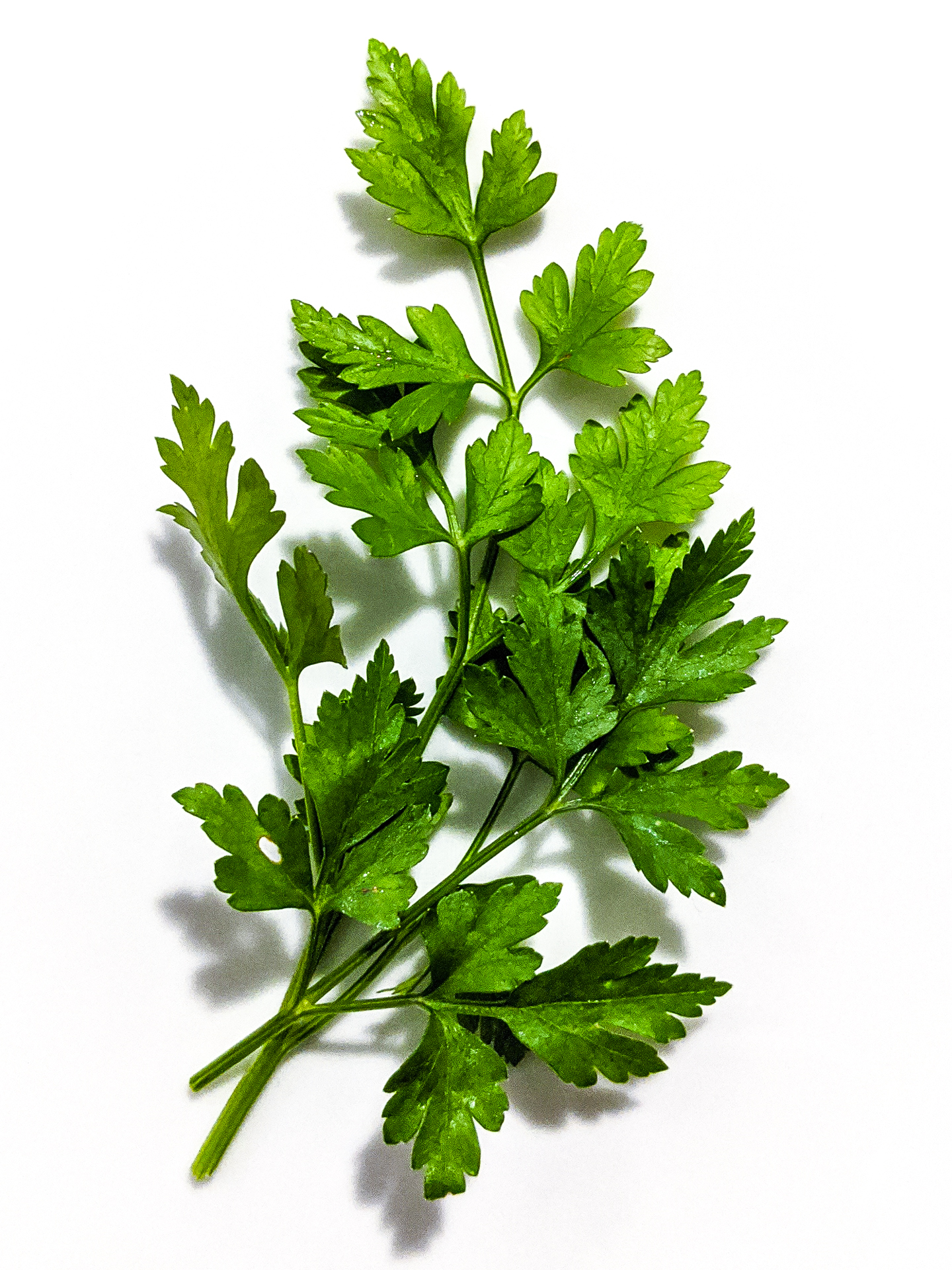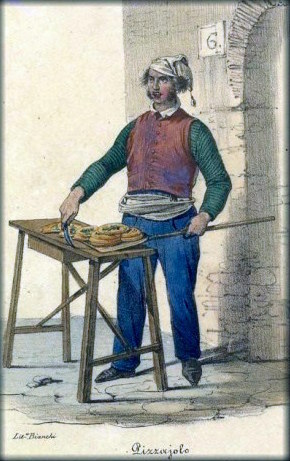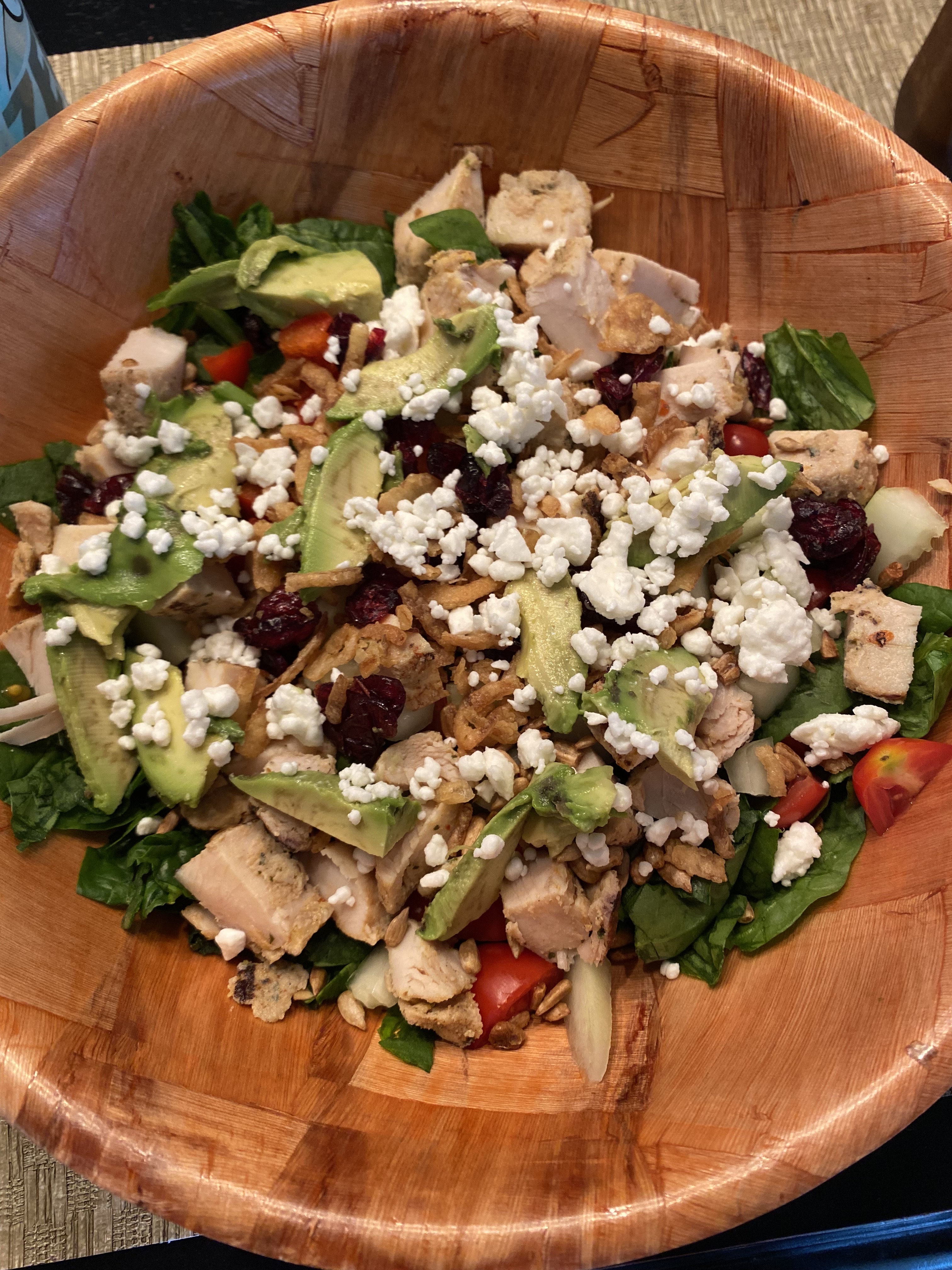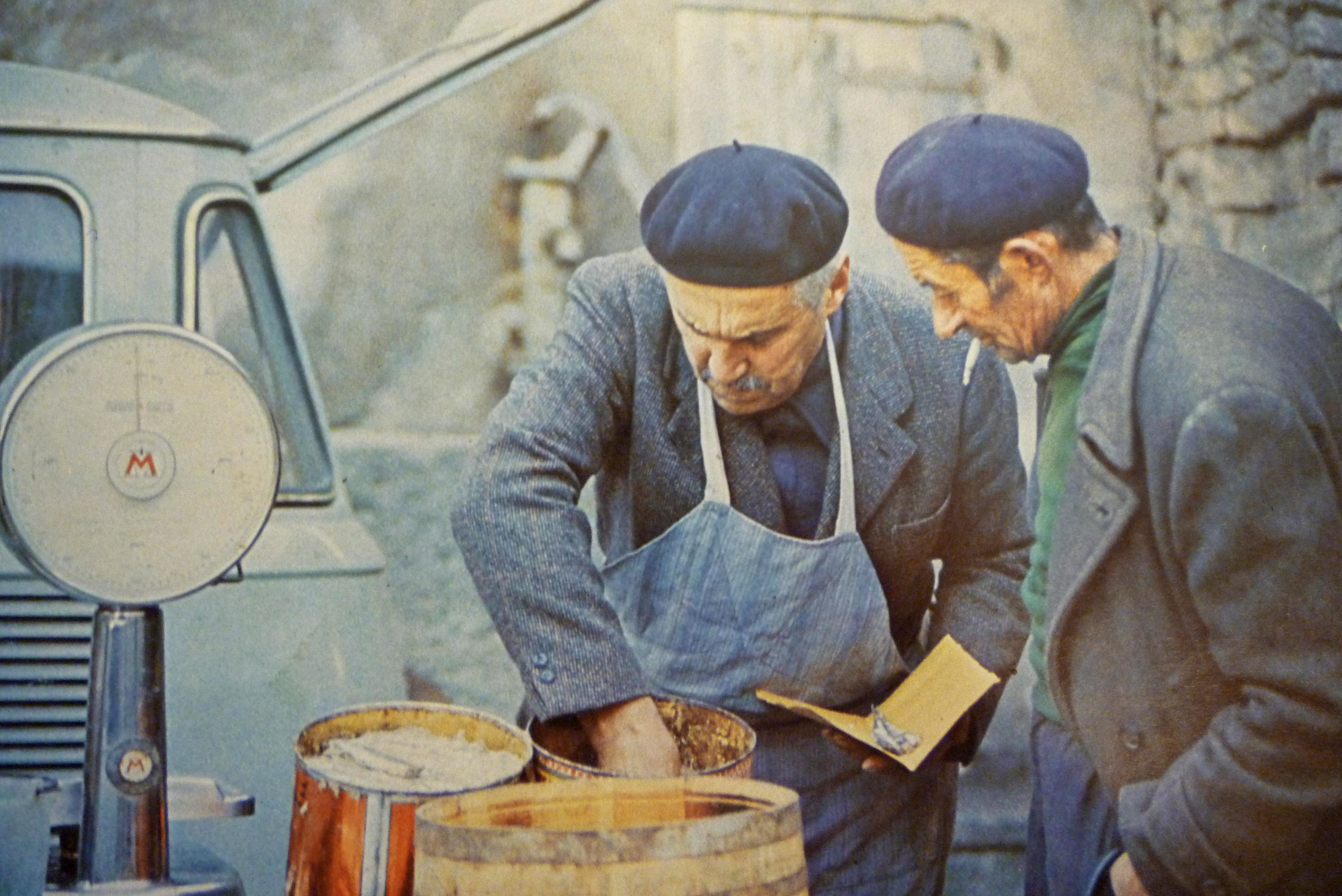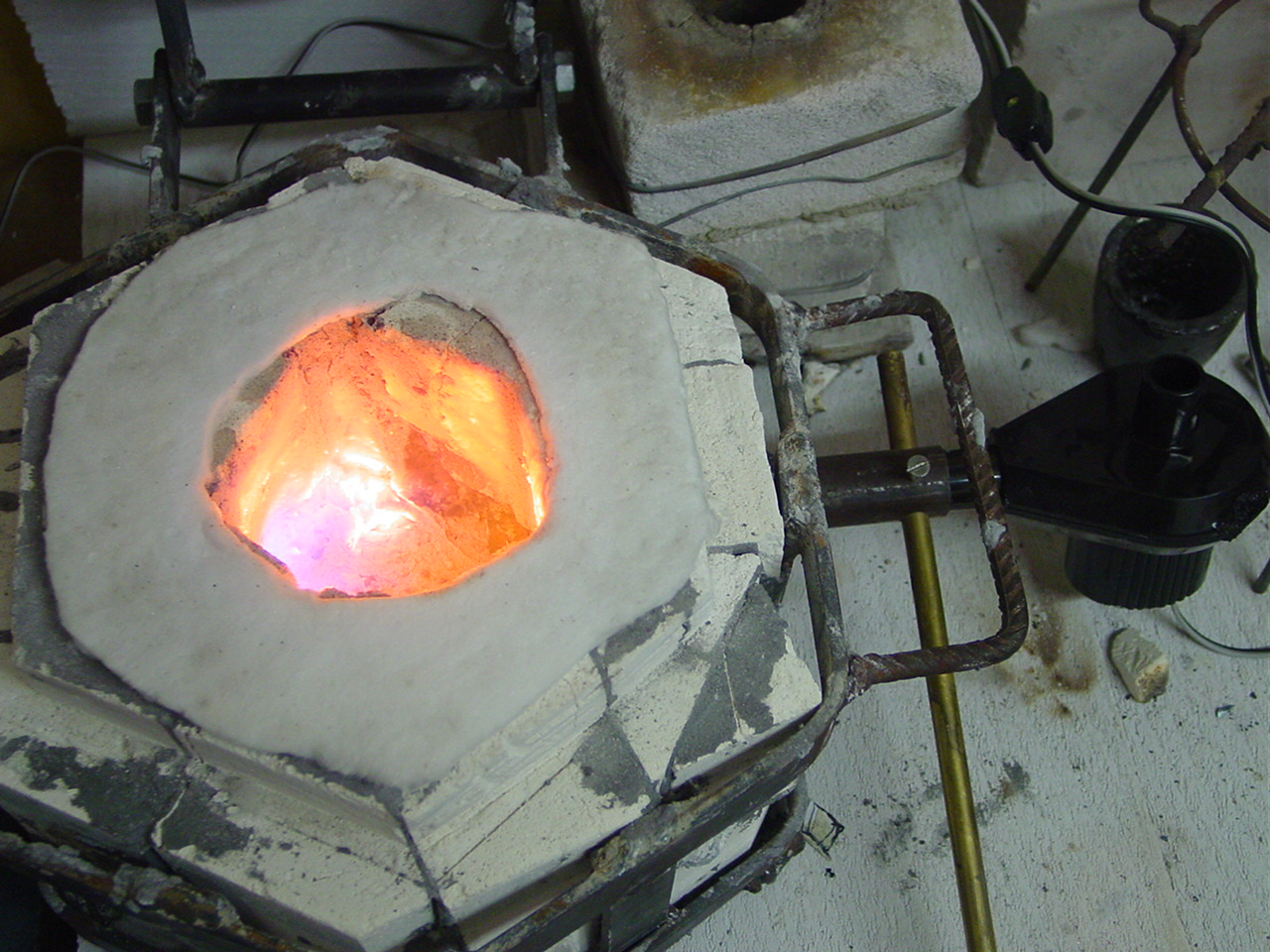|
Escalivada
Escalivada (; ), also sometimes transcribed in French as 'escalibade' and in Spanish as escalibada,Anya Von Bremzen, ''The New Spanish Table'' (Workman Publishing, 2005), p. 129 is a traditional dish from Roussillon, Catalonia, València, Murcia and Aragón of smoky grilled vegetables. It typically consists of roasted eggplant and bell peppers with olive oil and sometimes onion, tomato, minced garlic, and salt. The name comes from the Catalan verb , "to cook in ashes", referencing the dish's traditional preparation in the embers of a wood fire. The dish can be grilled outdoors on a grate until charred and soft or may be cooked whole directly on glowing coals and then peeled. Indoors, the eggplant may be charred on a gas burner and the rest of the vegetables may be broiled. as a relish for grilled meats or fish such as tuna, Penelope Casas, ''Paella!: Spectacular Rice Dishes From Spain''(Macmillan: 1999), p. 169 with anchovies or olives in a salad, or as a topping for ''coca' ... [...More Info...] [...Related Items...] OR: [Wikipedia] [Google] [Baidu] |
Eggplant Dishes
Eggplant ( US, CA, AU, PH), aubergine ( UK, IE, NZ), brinjal ( IN, SG, MY, ZA, SLE), or baigan ( IN, GY) is a plant species in the nightshade family Solanaceae. ''Solanum melongena'' is grown worldwide for its edible fruit, typically used as a vegetable in cooking. Most commonly purple, the spongy, absorbent fruit is used in several cuisines. It is a berry by botanical definition. As a member of the genus ''Solanum'', it is related to the tomato, chili pepper, and potato, although those are of the Americas region while the eggplant is of the Eurasia region. Like the tomato, its skin and seeds can be eaten, but it is usually eaten cooked. Eggplant is nutritionally low in macronutrient and micronutrient content, but the capability of the fruit to absorb oils and flavors into its flesh through cooking expands its use in the culinary arts. It was originally domesticated from the wild nightshade species ''thorn'' or ''bitter apple'', '' S. incanum'',Tsao and Lo in "V ... [...More Info...] [...Related Items...] OR: [Wikipedia] [Google] [Baidu] |
Eggplant
Eggplant (American English, US, Canadian English, CA, Australian English, AU, Philippine English, PH), aubergine (British English, UK, Hiberno English, IE, New Zealand English, NZ), brinjal (Indian English, IN, Singapore English, SG, Malaysian English, MY, South African English, ZA, Sri Lankan English, SLE), or baigan (Languages of India, IN, Caribbean English, GY) is a plant species in the Solanaceae, nightshade family Solanaceae. ''Solanum melongena'' is grown worldwide for its edible fruit, typically used as a vegetable in cooking. Most commonly purple, the spongy, absorbent fruit is used in List of cuisines, several cuisines. It is a berry (botany), berry by botany, botanical definition. As a member of the genus ''Solanum'', it is related to the tomato, chili pepper, and potato, although those are of the Americas region while the eggplant is of the Eurasia region. Like the tomato, its skin and seeds can be eaten, but it is usually eaten cooked. Eggplant is nutritionally ... [...More Info...] [...Related Items...] OR: [Wikipedia] [Google] [Baidu] |
Parsley
Parsley, or garden parsley (''Petroselinum crispum''), is a species of flowering plant in the family Apiaceae that is native to Greece, Morocco and the former Yugoslavia. It has been introduced and naturalisation (biology), naturalized in Europe and elsewhere in the world with suitable climates, and is widely cultivated as an herb and a vegetable. It is believed to have been originally grown in Sardinia, and was cultivated in around the 3rd century BC. Linnaeus stated its wild habitat to be Sardinia, whence it was brought to England and apparently first cultivated in Britain in 1548, though literary evidence suggests parsley was used in England in the Middle Ages as early as the Anglo-Saxon period. Parsley is widely used in European cuisine, European, Middle Eastern cuisine, Middle Eastern, and American cuisine. Curly-leaf parsley is often used as a garnish (food), garnish. In Central European cuisine, central Europe, Eastern European cuisine, eastern Europe, and southern Eur ... [...More Info...] [...Related Items...] OR: [Wikipedia] [Google] [Baidu] |
Pizza
Pizza is an Italian cuisine, Italian, specifically Neapolitan cuisine, Neapolitan, dish typically consisting of a flat base of Leavening agent, leavened wheat-based dough topped with tomato, cheese, and other ingredients, baked at a high temperature, traditionally in a wood-fired oven. The term ''pizza'' was first recorded in 997AD, in a Latin manuscript from the Southern Italy, southern Italian town of Gaeta, in Lazio, on the border with Campania. Raffaele Esposito is often credited for creating the modern pizza in Naples.Arthur Schwartz, ''Naples at Table: Cooking in Campania'' (1998), p. 68. .John Dickie, ''Delizia!: The Epic History of the Italians and Their Food'' (2008), p. 186.Father Giuseppe Orsini, Joseph E. Orsini, ''Italian Baking Secrets'' (2007), p. 99. In 2009, Neapolitan pizza was registered with the European Union as a traditional speciality guaranteed (TSG) dish. In 2017, the art of making Neapolitan pizza was included on UNESCO's list of intangible cultura ... [...More Info...] [...Related Items...] OR: [Wikipedia] [Google] [Baidu] |
Coca (pastry)
The coca (), coc or fogassa, is a pastry typically made and consumed in Catalonia,Eliana Thibaut i Comalada, ''Les Coques Catalanes'', Proa, Barcelona 1995. the Aragonese Strip, most of Valencia, the Balearic Islands, Andorra and in French Catalonia. All around the Mediterranean there are similar typical dishes. Etymology The word ''coca''—plural ''coques''—comes from Dutch during the Carolingian Empire, and shares the same roots as the English "cake" and the German "Kuchen". Similarities There are many diverse cocas, with four main varieties: sweet, savoury, closed and open. All of them use dough as the main ingredient, which is then decorated. This dough can be sweet or savoury. If it is sweet, eggs and sugar are added, and if it is savoury, yeast and salt. As regards the topping or filling, fish and vegetables are usual at the coast whilst inland they prefer fruit, nuts, cheese and meat. Some cocas can be both sweet and savoury (typically mixing meat and frui ... [...More Info...] [...Related Items...] OR: [Wikipedia] [Google] [Baidu] |
Salad
A salad is a dish consisting of mixed ingredients, frequently vegetables. They are typically served chilled or at room temperature, though some can be served warm. Condiments called '' salad dressings'', which exist in a variety of flavors, are usually used to make a salad. Garden salads have a base of raw leafy greens (sometimes young "baby" greens) such as lettuce, arugula (rocket), kale or spinach; they are common enough that the word ''salad'' alone often refers specifically to garden salads. Other types of salad include bean salad, tuna salad, bread salads (such as fattoush, panzanella), vegetable salads without leafy greens (such as Greek salad, potato salad, coleslaw), rice-, pasta- and noodle-based salads, fruit salads and dessert salads. Salads may be served at any point during a meal: * Appetizer salads – light, smaller-portion salads served as the first course of the meal * Side salads – to accompany the main course as a side dish; examples inclu ... [...More Info...] [...Related Items...] OR: [Wikipedia] [Google] [Baidu] |
Olive
The olive, botanical name ''Olea europaea'' ("European olive"), is a species of Subtropics, subtropical evergreen tree in the Family (biology), family Oleaceae. Originating in Anatolia, Asia Minor, it is abundant throughout the Mediterranean Basin, with wild subspecies in Africa and western Asia; modern Cultivar, cultivars are traced primarily to the Near East, Aegean Sea, and Strait of Gibraltar. The olive is the type species for its genus, ''Olea'', and lends its name to the Oleaceae plant family, which includes species such as Syringa vulgaris, lilac, jasmine, forsythia, and Fraxinus, ash. The olive fruit is classed botanically as a drupe, similar to the cherry or peach. The term oil—now used to describe any Viscosity, viscous Hydrophobe, water-insoluble liquid—was virtually synonymous with olive oil, the Vegetable oil, liquid fat made from olives. The olive has deep historical, economic, and cultural significance in the Mediterranean; Georges Duhamel (author), George ... [...More Info...] [...Related Items...] OR: [Wikipedia] [Google] [Baidu] |
Anchovies As Food
Anchovies are small, common saltwater forage fish in the family Engraulidae that are used as human food and fish bait. There are 144 species in 17 genera found in the Atlantic, Indian, and Pacific Oceans. Anchovies are usually classified as oily fish. They are small, green fish with blue reflections due to a silver longitudinal stripe that runs from the base of the caudal fin. They range from to in adult length, and the body shape is variable, with more slender fish in northern populations. A traditional method of processing and preserving anchovies is to gut and salt them in brine, allow them to cure, and then pack them in oil or salt. This results in the characteristic strong flavor associated with anchovies, and their flesh turns deep grey. Anchovies pickled in vinegar, as with Spanish '' boquerones en vinagre'', are milder, and the flesh retains a white color. For domestic use, anchovy fillets are sometimes packed in oil or salt in small tins or jars, sometimes ... [...More Info...] [...Related Items...] OR: [Wikipedia] [Google] [Baidu] |
Penelope Casas
Penelope Casas (May 25, 1943 – August 11, 2013) was an American food writer, cookbook author and expert on the cuisine of Spain. Casas began authoring a series of English-language cookbooks focusing on the food of Spain during the 1980s, effectively introducing Americans to Spain's culinary heritage for the first time. Casas released her first cookbook, ''The Foods and Wines of Spain'', in 1982. Her first book is still in print, as of 2013. She would publish five more in-depth books and cookbooks on Spanish cuisine. Her follow-up book, ''Tapas: The Little Dishes of Spain'', released in 1985, introduced a large American audience to the concept of tapas and tapas bars for the first time. Casas's last book was ''La Cocina de Mama: The Great Home Cooking of Spain'' in 2005. Casas was born Penelope Fexas to Greek immigrant parents, Antonia and Achilles Fexas, on May 25, 1943, in Whitestone, Queens, New York City. Her only brother, Tom Fexas, was a yacht designer. She met her husband, ... [...More Info...] [...Related Items...] OR: [Wikipedia] [Google] [Baidu] |
Relish
A relish (a pickle-based condiment) is a cooking, cooked and pickling, pickled culinary dish made of chopped vegetables, fruits or herbs, typically used as a condiment to enhance a staple. Examples are chutneys and the North American relish, a pickled cucumber jam eaten with hot dogs. In North America, the word "relish" is frequently used to describe a single variety of finely chopped pickled cucumber relish, such as pickle, dill and sweet relishes. Relish generally consists of discernible vegetable or fruit pieces in a sauce, although the sauce is subordinate in character to the vegetable or fruit pieces. Herbs and seeds may also be used, and some relishes, such as chermoula, are prepared entirely using herbs and spices. Relish can consist of a single type or a combination of vegetables and fruit, which may be coarsely or finely chopped; its texture will vary depending on the slicing style used for these solid ingredients, but generally a relish is not as smooth as a sauce-typ ... [...More Info...] [...Related Items...] OR: [Wikipedia] [Google] [Baidu] |
Gas Burner
A gas burner is a device that produces a non-controlled flame by mixing a fuel gas such as acetylene, natural gas, or propane with an oxidizer such as the ambient air or supplied oxygen, and allowing for wikt:ignition, ignition and combustion. The flame is generally used for the heat, infrared radiation, or visible light it produces. Some burners, such as gas flares, dispose of unwanted or uncontainable flammable gases. Some burners are operated to produce carbon black. The gas burner has many applications such as soldering, brazing, and welding, the latter using oxygen instead of air for producing a hotter flame, which is required for melting steel. Chemistry laboratories use natural-gas fueled Bunsen burners. In domestic and commercial settings gas burners are commonly used in gas stoves and cooktops. For melting metals with melting points of up to 1100 °C (such as copper, silver, and gold), a propane burner with a natural drag of air can be used. For higher temperatur ... [...More Info...] [...Related Items...] OR: [Wikipedia] [Google] [Baidu] |


